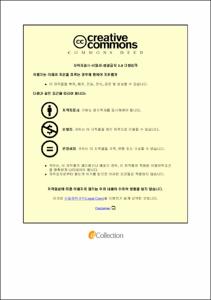Usefulness of diagnostic protocol including abdominal low-dose CT in pediatric acute appendicitis
- Abstract
- Background: Abdominal computed tomography (CT) is highly accurate in diagnosing pediatric acute appendicitis; however, there is concern regarding radiation exposure. Point-of-care ultrasound (POCUS) and low-dose CT (LDCT) may facilitate diagnosis in the emergency department (ED) when radiologist-performed ultrasound (RADUS) is unavailable. We designed a stepwise protocol for diagnosis of pediatric acute appendicitis integrating these modalities and conducted a study to evaluate its usefulness.
Methods: We prospectively studied patients aged <16 years with clinically suspected acute appendicitis who presented to the ED. POCUS was first performed by a pediatric emergency physician (stage 1); patients with undetermined or suspicious results for appendicitis were enrolled in this study and received LDCT (stage 2). RADUS was done selectively in cases that remained inconclusive after LDCT (stage 3).
Results: Two hundred 84 patients (155 males, 54.6%) with a mean age of 9.32 ± 3.08 years were enrolled in the study and underwent LDCT. Among them, 109 patients (38.4%) had surgically proven appendicitis. POCUS was indeterminate in 72 patients (25.3%) and suspicious for appendicitis in 212 patients (74.6%). LDCT was performed with a mean effective radiation dose of 1.03 ± 0.47 mSv and demonstrated equivocal results in 23 cases (8.1%). The incomplete protocol after LDCT (stage 2) demonstrated a 14.2% negative appendectomy rate, 89.0% sensitivity, 90.9% specificity, and 9.73 positive likelihood ratio. RADUS was performed in 32 patients (11.3%), including 18 cases with equivocal results on LDCT. The final diagnostic protocol integrating POCUS, LDCT, and selective RADUS (stage 3) demonstrated a 9.7% negative appendectomy rate, 93.6% sensitivity, 93.7% specificity, and 14.89 positive likelihood ratio.
Conclusion: The stepwise protocol achieved useful outcomes for diagnosing pediatric acute appendicitis in the ED with reduced radiation exposure. For inconclusive cases after LDCT, supplementary RADUS may be helpful in increasing diagnostic accuracy.
|연구배경: 응급실에서 소아 급성충수염을 정확하고 안전하게 진단하는 것은 중요하다. 복부 CT는 매우 정확하지만 특히 소아 환자에서 많은 양의 방사선 조사로 인해 제한점이 있다. 소아 급성충수염의 진단을 위한 일차적인 영상초음파 시행이 불가능한 응급실에서 표준방사선량 CT의 사용을 피하기 위해 최근 보고된 현장초음파와 저방사선량 CT를 이용한 새로운 프로토콜의 개발이 필요하다.
연구목적: 응급실에서 소아 급성충수염의 진단을 위한 현장초음파, 저방사선량 CT, 선별적인 영상초음파를 통합하는 프로토콜의 유효성을 검증하고, 저방사선량 CT 시행 이후에도 진단에 이르지 못한 증례들에서 추가적인 영상초음파가 도움이 되는지 평가하고자 한다.
연구방법: 응급실을 방문하여 임상적으로 급성충수염이 의심되는 16세 미만의 소아 환자를 대상으로 전향적 연구가 시행되었다. 현장초음파(1단계)는 소아응급의사에 의해 시행되었으며, 판독결과가 불충분하거나 급성충수염이 의심되는 경우에 본 연구에 등록되어 저방사선량 CT(2단계)를 시행하였다. 저방사선량 CT의 판독결과가 불명확하거나 임상증상과 잘 맞지 않아 진단에 이르지 못한 경우 의료진의 요청에 의해 선별적으로 영상초음파(3단계)가 시행되었다.
연구결과: 총 284명의 소아 환자가 연구에 포함되었으며, 남자는 155명(54.6%), 평균 나이는 9.32 ± 3.08세였다. 이 중에 109명(38.4%)이 수술 결과 급성충수염으로 진단되었다. 현장초음파 판독결과 72명(25.3%)에서 불충분하였으며, 212명(74.6%)에서 급성충수염이 의심되었다. 저방사선량 CT의 평균 유효선량은 1.03 ± 0.47 mSv이었으며, 23명(8.3%)에서 불명확한 판독결과를 보였다. 2단계 저방사선량 CT까지 진행한 불완전한 프로토콜은 14.2%의 음성충수절제율, 89.0%의 민감도, 90.9%의 특이도, 9.73의 양성가능도비를 보였다. 선별적인 영상초음파는 32명(11.3%)의 환자에서 시행되었다. 현장초음파, 저방사선량 CT, 선별적인 영상초음파를 통합하는 프로토콜은 9.7%의 음성충수절제율, 93.6%의 민감도, 93.7%의 특이도, 14.89의 양성가능도비를 보였다.
결론: 본 연구에서 제시된 프로토콜은 주목할 만큼 낮은 방사선량으로 응급실에서 소아 급성충수염의 진단에 유용한 것으로 판단된다. 저방사선량 CT 시행 이후에도 진단에 이르지 못한 경우 추가적인 영상초음파가 도움이 될 수 있다.
- Issued Date
- 2019
- Awarded Date
- 2019-08
- Type
- Dissertation
- Alternative Author(s)
- Jeong-Yong Lee
- Affiliation
- 울산대학교
- Department
- 일반대학원 의학과
- Advisor
- 고태성
- Degree
- Doctor
- Publisher
- 울산대학교 일반대학원 의학과
- Language
- eng
- Rights
- 울산대학교 논문은 저작권에 의해 보호받습니다.
- Appears in Collections:
- Medicine > 2. Theses (Ph.D)
- 파일 목록
-
-
Download
 200000218466.pdf
기타 데이터 / 855.87 kB / Adobe PDF
200000218466.pdf
기타 데이터 / 855.87 kB / Adobe PDF
-
Items in Repository are protected by copyright, with all rights reserved, unless otherwise indicated.